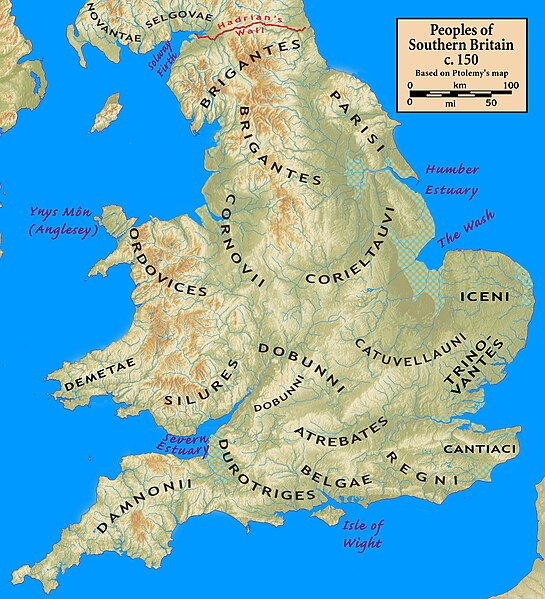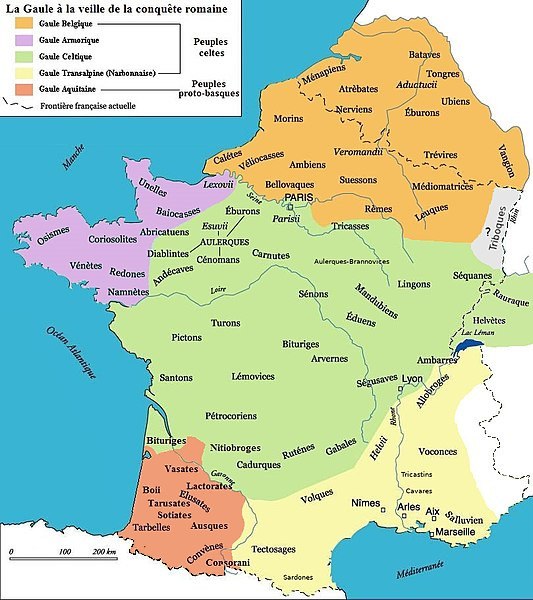The Viromanduī or Veromanduī were a Belgic tribe dwelling in the modern Vermandois region (Picardy) during the Iron Age and Roman periods. During the Gallic Wars, they belonged to the Belgic coalition of 57 BC against Caesar.
Plan of the oppidum of the Viromandui at Vermand by Édouard Fleury (1877)
Stele erected by Bienus in honour of his father, the Viromandian Gatus, his mother and his two brothers. (CIL XIII 8342)
The Belgae were a large confederation of tribes living in northern Gaul, between the English Channel, the west bank of the Rhine, and the northern bank of the river Seine, from at least the third century BC. They were discussed in depth by Julius Caesar in his account of his wars in Gaul. Some peoples in southern Britain were also called Belgae and had apparently moved from the continent. T. F. O'Rahilly believed that some had moved further west and he equated them with the Fir Bolg in Ireland. The Roman province of Gallia Belgica was named after the continental Belgae. The term continued to be used in the region until the present day and is reflected in the name of the modern country of Belgium.
Belgae
According to Strabo: the Belgian tribes (in orange), including the Armoricani (in purple)




